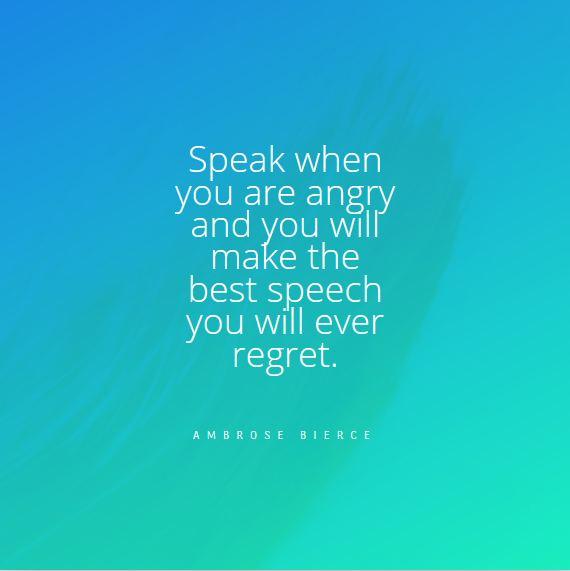“When you speak out of anger, you’ll likely say things you’ll later regret.”
— Ambrose Bierce
Experiencing frustration is completely normal. Everyone has felt it, whether it’s due to a colleague missing a deadline, a friend bailing on plans unexpectedly, or just navigating daily inconveniences. However, how we convey that frustration is what truly matters.
If managed poorly, frustration can seem like hostility, resulting in unnecessary disagreements. Conversely, when expressed carefully, it can lead to greater understanding, collaborative problem-solving, and improved relationships.
Here are strategies for articulating frustration without coming across as angry, disrespectful, or hostile.
1. Take a Moment Before Responding
In times of high emotion, frustration might lead us to react impulsively rather than thoughtfully. A brief pause—even just a few seconds—can help avert an emotional outburst.
- Breathe deeply prior to responding.
- Ask yourself: “Will I regret my choice of words later?”
- If necessary, remove yourself temporarily before tackling the problem.
Example:
Instead of: “I can’t believe you forgot again! This is outrageous!”
Consider: “I’m quite frustrated about this. Can we discuss how to prevent it in the future?”
A brief pause can turn a heated debate into a constructive dialogue.
2. Use “I” Statements Instead of “You” Statements
Phrases like “You never pay attention” or “You always cause problems” force the other person to become defensive. Instead, communicate how you’re feeling and what you need.
- Shift from blaming to sharing feelings.
- Be clear about the issue.
- Avoid overstatements like “always” and “never.”
Example:
Instead of: “You never respect my time!”
Consider: “I feel upset when meetings start late because it disrupts my day.”
By concentrating on your feelings instead of their actions, you foster understanding instead of defensiveness.
3. Speak Softly, Even When Frustrated
It’s easy to raise your voice when emotions run high, but volume doesn’t guarantee impact. In fact, adopting a calm but firm tone often encourages better listening.
- Maintain a steady tone. Speak with confidence rather than hostility.
- Steer clear of sarcasm or belittling comments.
- Ensure your tone matches your message. Saying “I’m fine” with a tense jaw can send mixed signals.
Example:
Instead of: “Why can’t you do anything correctly?!”
Consider: “This situation isn’t working well for me. Let’s collaborate on a solution.”
A calm tone helps ensure the discussion remains productive rather than escalating tension.
4. Aim for Solutions Rather Than Complaints
It’s okay to express frustration, but dwelling solely on complaints doesn’t help resolve the issue. Focus on constructive solutions by asking relevant questions.
- Identify what’s troubling you.
- Suggest potential solutions.
- Encourage the other person to collaborate on finding a resolution.
Example:
Instead of: “This process is completely ineffective!”
Consider: “I’ve noticed this process is hindering our efficiency. Can we explore a different method?”
Transforming frustration into solutions encourages teamwork rather than resentment.
5. Select an Appropriate Time and Place
Ranting in an inappropriate setting—such as in a public forum or during a tense moment—can exacerbate the situation. Instead, find a time when the other party is more open to dialogue.
- Refrain from public criticism. Private conversations are typically less confrontational.
- Avoid discussing issues during crises. Wait for a more relaxed setting.
- If you’re feeling too emotional, postpone the discussion.
Example:
Instead of: “This report is a catastrophe!” (said in a meeting)
Try: “Could we review the report later? I have some concerns I’m eager to discuss.”
Timing can be crucial in determining whether a conversation is productive or defensive.
6. Validate the Other Person’s Viewpoint
Even in moments of frustration, displaying empathy helps avoid unnecessary conflicts. Often, individuals don’t intend to upset you—they might just have a different perspective.
- Hear their viewpoint before presuming negative intent.
- Utilize phrases that convey openness, like “I understand where you’re coming from.”
- Seek common ground.
Example:
Instead of: “You clearly don’t value my time!”
Consider: “I see you have many commitments. I need to ensure that deadlines are adhered to.”
By acknowledging their viewpoint, they are likely to be more receptive to yours as well.
7. Conclude with a Positive Action Step
Even if your frustration is justified, finishing on a pessimistic note perpetuates tension. Focus instead on taking positive steps forward by:
- Recapping what has been decided.
- Offering a positive remark.
- Expressing gratitude for the other person’s time.
Example:
Instead of: “Just make sure this doesn’t happen again.”
Consider: “I appreciate you taking the time to discuss this. Thank you for working towards a solution.”
A positive conclusion fosters more constructive and less tense future interactions.
Final Thoughts: Conveying Frustration Without Regrets
Feeling frustration is a part of life—but how you communicate it can either strengthen or weaken relationships.
- Pause before voicing your thoughts. Give yourself time to collect your emotions.
- Use “I” statements to share how you feel without placing blame.
- Maintain a steady voice to take charge of the discussion.
- Prioritize solutions over problems.
- Select an appropriate time and setting.
- Validate the other person’s viewpoint.
- Conclude with a positive action.
The aim isn’t to stifle frustration—it’s about articulating it in a manner that fosters understanding and resolutions.
When managed skillfully, frustration doesn’t need to create rifts. It can actually bring people closer.

